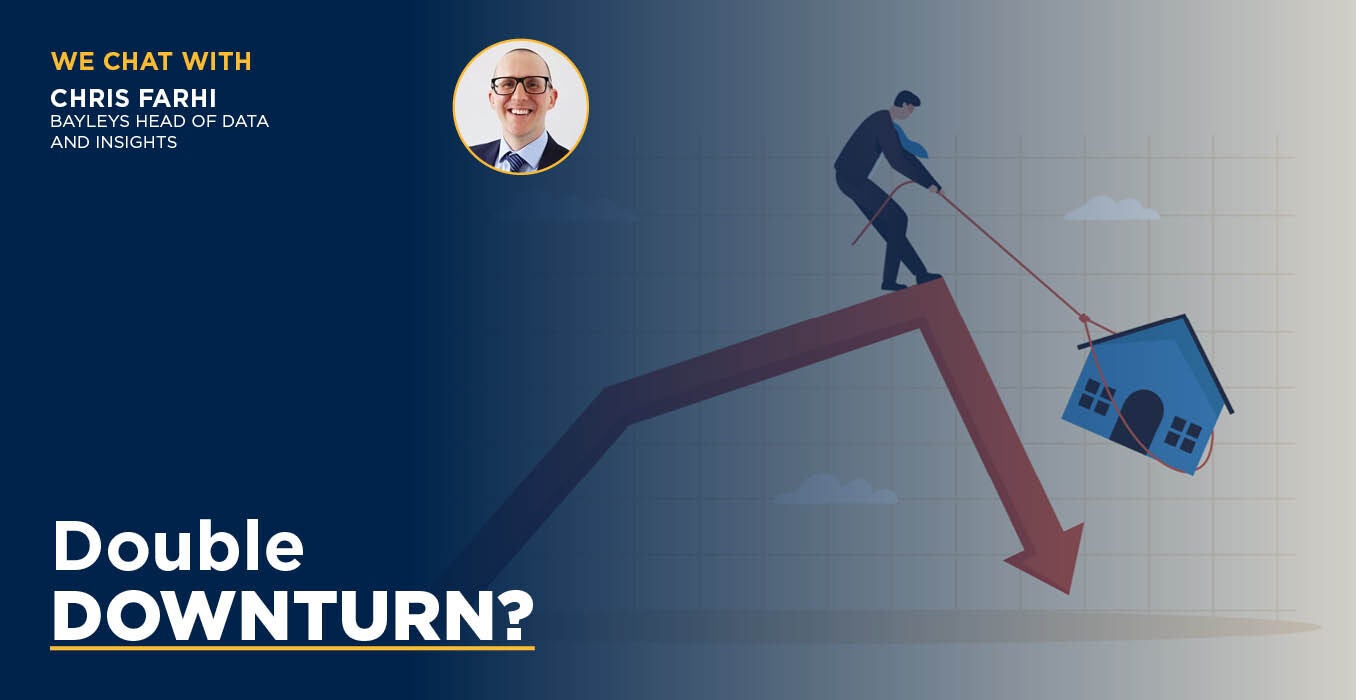
Residential -
Double downturn?
We’ve been hearing for a while that the housing market recovery is on its way, but so far, it’s been a little sluggish. Despite several interest rate cuts, prices aren’t surging ahead - instead, they seem to be tracking sideways with small ups and downs. So why is the bounce-back taking longer than expected, and is there a risk of a second downturn?
Bayleys Head of Insights and Data Chris Farhi says while there have been some ups and downs, conditions remain flat.
“The most recent house price data shows the house price index slightly dipped for a couple of months, but the most recent results saw it rise slightly. I think the market is moving sideways with small peaks and troughs rather than a big change. Talk about a double dip seems to be clickbait rather than evidence-based analysis.”
“The start of the downturn in 2022 came from high interest rates, but interest rates have since come down substantially. The sticking point though, is the fact that the supply of homes for sale remains persistently high.”
“What we're seeing now is a normal level of transactions with the market making small corrections as it ultimately moves along sideways.”
WHY IS IT TAKING SO LONG TO BOUNCE BACK?
At the start of the year, there was lots of optimism about the market, but was it too premature?
Farhi says a lot of that optimism stemmed from the first lot of interest rate cuts to come through.
“Given those cuts, it was valid to make an assumption that the market would pick up quite quickly, but as we all know it’s played out quite differently.”
“When interest rates came down, we saw listing volume improve, which is good, but we also had a buildup of supply at the same time, which hasn't been able to be chipped down.”
He says as the market has improved, supply has also increased at the same time.
“There isn’t the pressure or fear of missing out from buyers, so that's taken the pressure off prices.”
WHERE IS THE OVERSUPPLY COMING FROM?
Farhi says the majority of oversupply appears to be coming from the lower end of the market.
“The reason we say that is anecdotally there’s a lot more confidence in the high end of the market where there's fewer listings, and there hasn't been that same build up of homes for sale.”
As for the areas that have weathered the storm well, Farhi says Queenstown has been one of the most resilient.
“We've seen that in off the plan sales for new developments, which have generally been pretty good.”
“But outside of that, the overall situation is pretty consistent. I think where you will see the difference is not so much at the regional level, but when you get into suburb level. There will be certain suburbs that have remained consistently performing.”
ARE VENDORS MORE WILLING TO MEET THE MARKET NOW?
Farhi says with interest rates coming down, many vendors have been stubborn on pricing, but he believes they’re starting to change their tune.
“Enough time has passed that people are starting to get a sense that there's no evidence that prices are going to boost right back to the levels we saw in 2021 over the short term.”
“I think it's just taken some time to adjust to the idea. Ultimately, though, they will be buying and selling in the same market, so if they're selling slightly lower than they were expecting, they can probably buy slightly lower for what they were expecting as well.”
Farhi believes the pace of the market is actually a positive for those looking to relocate.
“Things are actually really stable for them at the moment. It’s much better than what was happening in 2021 when people would sell their house and in the time it took them to buy another the market went up $100,000 because they couldn’t buy straight away.”
“The current market conditions are actually quite forgiving and do provide a little bit of time for you to purchase your dream home once you've sold.”
HOW LONG WILL THIS LAST?
Farhi says right now there are around 30,000 homes for sale, which is around 9,000 more than what we would normally see.
“If you look at the number of sales that are coming through, we need around six months to a year of really good sales numbers to start to take down that supply to a more normal level. At that point, there’ll start to be a bit more pressure on prices.”
“But it's not going to be a one or two-month situation. It's going to be more like a 6-, 12- or 18-month period that it's going to take to really sort out that oversupply in the market.”
Farhi says, ultimately if you’re making decisions around the sale of your house, don’t rely on there being a huge boost in the market over the short term.
“Do your planning around where the market's at today, rather than trying to forecast extra money in the future.”